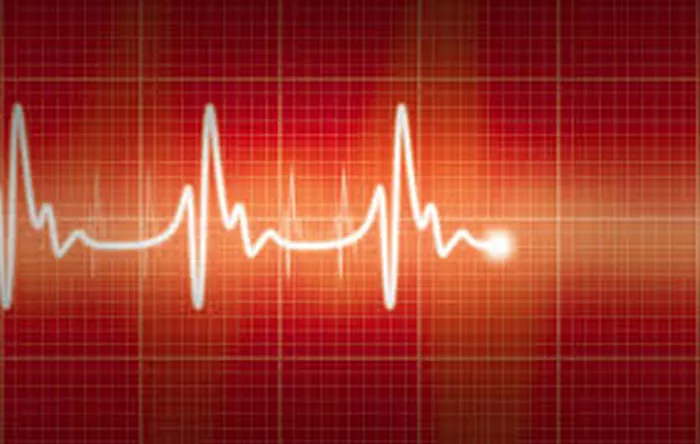Sinus tachycardia is a type of heart rhythm disorder characterized by a faster-than-normal heart rate, typically defined as a heart rate greater than 100 beats per minute in adults. It is often seen as a response to various factors, including exercise, fever, anxiety, or illness. However, a crucial aspect of understanding sinus tachycardia is identifying where it originates.
Some people may wonder whether sinus tachycardia arises from the ventricles, the lower chambers of the heart. To address this, it’s important to first understand the nature of sinus tachycardia and its relationship to other heart rhythms.
Understanding Sinus Tachycardia
Sinus tachycardia occurs when the heart’s natural pacemaker, the sinoatrial (SA) node, sends electrical signals at an accelerated rate.
The SA node is located in the right atrium, the upper right chamber of the heart. It generates electrical impulses that control the heart’s rhythm and ensure that the heart beats regularly.
In sinus tachycardia, these electrical signals are sent more frequently, causing the heart rate to rise above the normal range.
The increased rate is usually a response to a physiological need, such as physical exertion or a response to stress. This condition is generally benign and can be observed in healthy individuals during exercise or emotional distress. However, sinus tachycardia can also occur due to pathological reasons, such as anemia, hyperthyroidism, fever, or certain medications.
The Origin of Sinus Tachycardia
The key feature that distinguishes sinus tachycardia from other forms of rapid heart rhythms is that it arises from the SA node, which is located in the atrium of the heart. The electrical impulses from the SA node are conducted through the atria to the atrioventricular (AV) node, then through the His-Purkinje system, and finally to the ventricles, causing them to contract and pump blood.
Unlike other arrhythmias, such as ventricular tachycardia, sinus tachycardia does not originate from the ventricles. In ventricular tachycardia, the electrical signals are generated by abnormal tissues within the ventricles. These signals can result in a very rapid heart rate that may not be responsive to the normal regulatory mechanisms that control the heart’s rhythm.
Sinus tachycardia, on the other hand, is driven by the normal electrical conduction system of the heart, which starts in the SA node. The SA node is the heart’s primary pacemaker, and its rate is regulated by a variety of factors, including autonomic nervous system activity, blood oxygen levels, and other physiological conditions.
Ventricular Arrhythmias vs. Sinus Tachycardia
It is essential to distinguish between sinus tachycardia and other types of arrhythmias that can involve the ventricles.
Ventricular arrhythmias, such as ventricular tachycardia (VT) and ventricular fibrillation (VF), are different from sinus tachycardia in several key ways.
Origin of the Electrical Impulse:
Sinus Tachycardia: Originates in the SA node, the normal pacemaker of the heart, located in the right atrium.
Ventricular Tachycardia: Originates in the ventricles, often due to abnormal tissue or scarring, and can lead to a dangerously fast heart rate.
Ventricular Fibrillation: Also originates in the ventricles and is a chaotic, disorganized electrical activity that prevents the heart from pumping effectively, which can be life-threatening.
Heart Rate:
Sinus Tachycardia: Typically results in a heart rate between 100 and 180 beats per minute. It is often a physiological response to stressors like exercise, fever, or anxiety.
Ventricular Tachycardia: Can result in heart rates exceeding 150 beats per minute and may be associated with underlying heart disease, such as ischemic heart disease or a previous heart attack.
Ventricular Fibrillation: The heart rate in ventricular fibrillation is irregular and extremely rapid, often resulting in no detectable pulse.
Effect on Heart Function:
Sinus Tachycardia: In most cases, sinus tachycardia does not impair heart function, as it is a normal physiological response.
However, if the heart rate becomes excessively fast for prolonged periods, it can lead to symptoms like dizziness, fatigue, or chest discomfort.
Ventricular Tachycardia: Ventricular tachycardia can be life-threatening because the rapid, inefficient contractions of the ventricles reduce the heart’s ability to pump blood effectively. This can lead to shock or even sudden cardiac arrest if not treated immediately.
Ventricular Fibrillation: This is an emergency situation that leads to the cessation of effective heart function and requires immediate intervention, typically through defibrillation.
Clinical Implications of Sinus Tachycardia
Sinus tachycardia itself is generally not a cause for concern if it arises from physiological factors such as exercise or stress.
However, when it is triggered by an underlying medical condition, it can indicate a need for further investigation. Some of the common causes of sinus tachycardia include:
Fever: Elevated body temperature can cause the heart to beat faster as the body works to regulate its temperature.
Anemia: A low red blood cell count can lead to reduced oxygen levels in the blood, prompting the heart to beat faster to deliver more oxygen to tissues.
Hyperthyroidism: Overactive thyroid can increase metabolism and heart rate.
Dehydration or Electrolyte Imbalances: These can affect the heart’s electrical conduction system, leading to abnormal rhythms.
Medications: Some drugs, such as stimulants or decongestants, can increase heart rate.
Treatment for sinus tachycardia focuses on addressing the underlying cause. In most cases, once the triggering factor is treated, the heart rate returns to normal. However, if the heart rate remains elevated for prolonged periods, or if it is associated with symptoms like chest pain or shortness of breath, further evaluation may be necessary.
Conclusion
Sinus tachycardia does not arise from the ventricles. It originates from the sinoatrial (SA) node in the atrium, which is responsible for initiating the electrical impulses that regulate the heart’s rhythm. While sinus tachycardia and ventricular arrhythmias can both result in an elevated heart rate, they differ in their origin, underlying causes, and potential clinical implications. Ventricular arrhythmias, such as ventricular tachycardia and ventricular fibrillation, are much more dangerous and require immediate medical attention. On the other hand, sinus tachycardia is often a normal response to various stimuli and typically resolves once the underlying cause is addressed.
Related topics:


